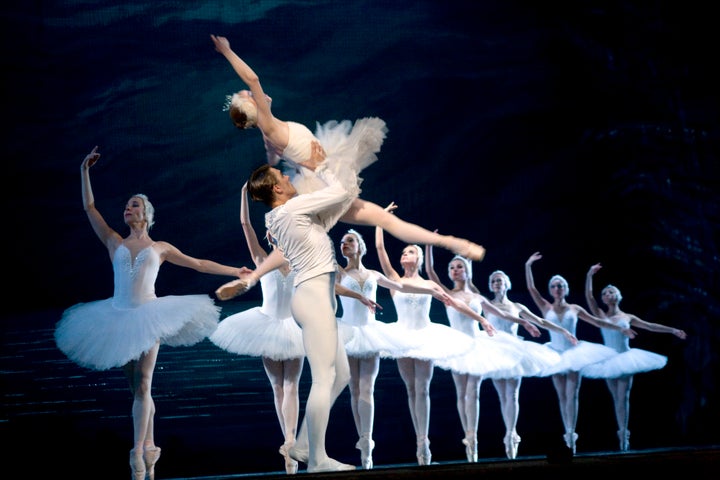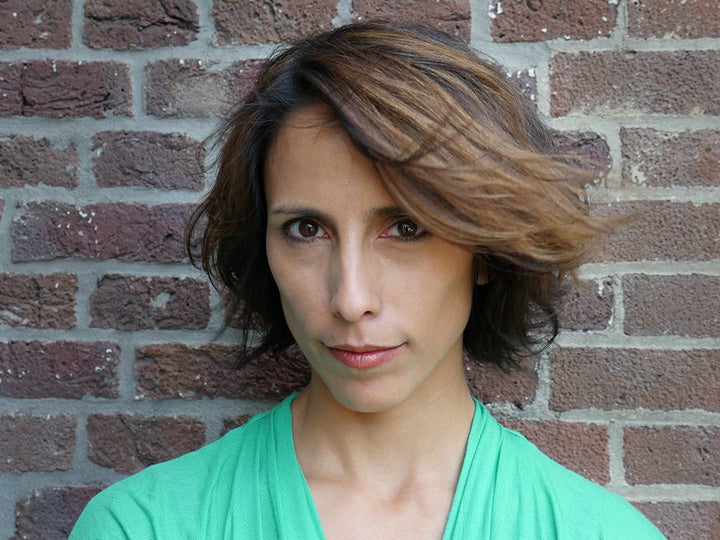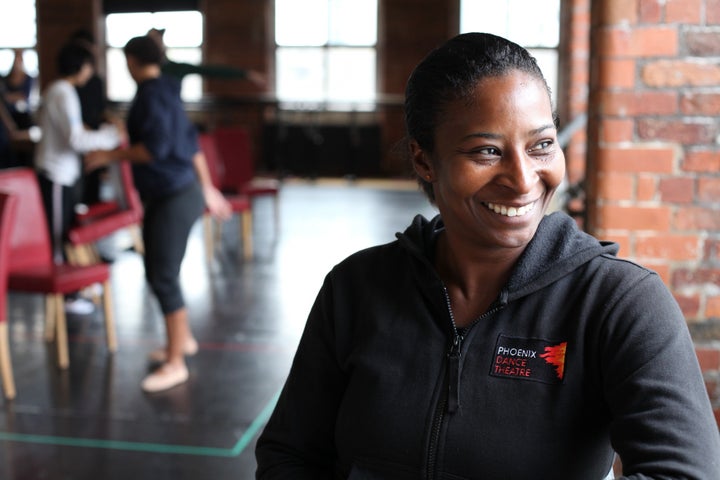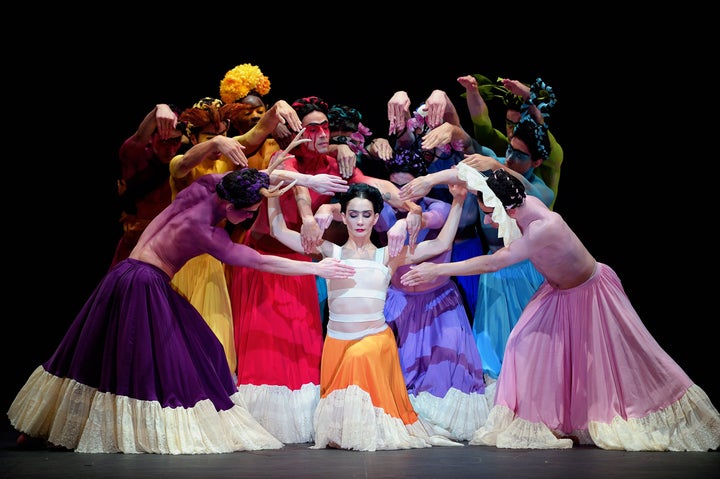Visit most town halls across England on a Saturday morning and you’re likely to find dozens of little girls dutifully standing with their feet in first position. If you’re lucky, you may find one or two boys hidden among them.
A report from the Department for Media, Culture and Sport found that 43.3% of girls between the ages of five and 10 participate in dance-based activities, compared to just 12.2% of boys.
But when you look at the lineup of adults who dominate the most powerful positions in dance, particularly the world of classical ballet, the picture couldn’t be more different.
It’s been 17 years since the Royal Ballet commissioned a work by a female choreographer on the main stage of the Royal Opera House.
What’s more, just four of the 16 associate artists at Sadler’s Wells are women.
“Early dance is populated with females, yet the higher up the ladder you go the less women you see,” Sharon Watson, artistic director at Phoenix Dance Theatre in Leeds tells The Huffington Post UK.
So what’s stopping women from rising to the top in a field they otherwise dominate?

Choreographer Annabelle Lopez Ochoa believes the training young dancers receive may be putting women at a disadvantage to men if they choose to pursue a career in choreography later down the line.
Because there are so few male dancers, they are often encouraged to be individual, whereas young female dancers are trained in the art of appearing as a unit.
“Most of the female choreographers come from contemporary dance. In that world we are more engaged in discussing with directors and choreographers due to the improvisational tools that choreographers use to create their pieces,” she tells HuffPost UK.
“In classical ballet, young ballerinas are not asked to express their thoughts, and opinions about what they dance, they are taught the steps and counts. Hence their speaking and leading skills are left underdeveloped.
“A young classical ballerina who could have a start at a choreographic career at a major company lacks the tools and practice to become a choreographer. And then, for a contemporary dancer, to break through into a classical company, it takes time for directors to notice them, and so there are not so many of female choreographers working in ballet right now.”

Despite the odds, Lopez Ochoa has created works for some of the world’s most renowned dance companies, including Scapino Ballet Rotterdam, Finnish National Ballet and The Washington Ballet.
She started choreographing aged 11 and decided to focus solely on creating her own pieces when she turned 30. Remarkably, she received her first international commission just two years later. But she acknowledges that if she had been a male dancer, the process may have been even quicker.
“At 42, I can say that I am an established choreographer. It might have taken me longer than my male colleagues but I believe that art needs not just craftsmanship but maturity,” she says.
Watson also has first-hand experience of how difficult it can be for women to rise to the top in dance.
When she joined Phoenix as a dancer back in 1989 she was one of the only female principal performers at the previously all-male, all-black company.
“It was hard work,” she says. “We almost had to earn our place even though we were schooled in a similar way to the men.”

Even as a dancer, Watson had clear ideas about the direction she thought the company should go in in order to secure funding. But as a woman, it was a constant battle to ensure her voice was heard.
“The women became incredibly powerful people in that group. We had to be, because we were fighting against incredibly powerful men,” she says.
Her transition from dancer and choreographer to artistic director wasn’t smooth. Despite running her own company (ABCD) in the interim and gaining a wealth of experience, Watson was not chosen as artistic director for Phoenix the first time she applied for the position.
“It was given to a male over a female. It was given to an outsider as opposed to an insider,” she says.
“I had to take myself off and get myself a Masters to prove that there’s an area of my work that is creative and I can think about it.”
When she reapplied for the position in 2009, masters in hand, she was finally given the top spot. But she believes she wouldn't have had to take time out to complete this qualification in the first place if she had been a man.
“It’s not only a question of gender by a question of race as well,” she adds.
“I think I’m probably one of only two black women in the country that’s running a company of this scale. You just think, wow, that’s not right.”
Thankfully, some of Britain’s biggest companies and theatres are finally starting to wake up the fact that this lack of diversity is unacceptable.
In 2012 English National Ballet appointed Tamara Rojo as artistic director. Under her leadership, the company premiered 'She Said' earlier this month - a triple bill dedicated to female choreography.

Sadler’s Wells is also actively working to showcase more work from female choreographers and directors.
“For a while now we have been aware of how, despite good intentions and some progress in recent years, we still have a long way to go in terms of more effectively supporting women choreographers,” Sadler’s Wells artistic director and chief executive Alistair Spalding tells HuffPost UK.
“We present a varied range of work created by women on our stages every season and one of our artist development programmes, Sadler’s Wells Summer University, is currently supporting 13 women out of a total of 21 artists.
“But we know we need to do even more – which is why we are currently taking part in Advance, a six-month programme led by Tonic Theatre. With their help, we are exploring how we can better support women in sustaining a career in choreography.”
The Arts Council is also making a stand, by saying their funding will be influenced by whether or not companies are working to improve diversity.
"In 2014, we committed our funded organisations to a fundamental shift in their approach to diversity, making them accountable for promoting and developing diversity across their leadership, workforce, programming and audiences," a spokesperson said.
"We measure their progress annually and while some progress has been made, there is still more to be done to ensure that all art and cultural organisations reflect the diversity of their communities."
SEE ALSO:
Dancer's Instagram Reveals The Brutal Side Of Professional Ballet
This Is What It's Like To Be A Pregnant Ballet Dancer
The Royal Ballet is also making moves in the right direction.
“Commissions are about the right fit for the Company, whether male or female,” the company’s director Kevin O’Hare tells us.
“But we do acknowledge that there is some way to go with addressing gender imbalance.”
While The Royal Ballet may not have commissioned a piece by a female choreographer on the Royal Opera House main stage since Siobhan Davis presented ‘The Strangers Taste’ in 1999, O’Hare points out that it has been engaging with female choreographers since then, albeit on smaller stages.
"A number of female choreographers have presented work at the Linbury Studio Theatre in the Royal Opera House including Mayuri Boonham, Martha Clarke, Aletta Collins, Shonana Jeyasingh and Kristen McNally,” he says.
“When I took up my role as Director of The Royal Ballet in 2012, one of the first things I did was to ask choreographer Crystal Pite to make a new work for the Company, it has taken since then to align our schedules, Pite’s new work for The Royal Ballet will premiere in March 2017."
In 2015 O’Hare also appointed Charlotte Edmonds as the inaugural participant on The Royal Ballet’s Young Choreographer Programme - an initiative dedicated to enabling emerging talent to gain key skills in becoming a successful choreographer.
The director adds that there are “also many discussions” taking place across the Royal Opera House including “engagement with different groups and diversity related issues”.
Like Sadler's Wells, The Royal Opera House is currently working with Tonic Theatre to look at gender issues in artistic programming and investigate some of the reasons behind the imbalance.
It all sounds well and good, but Watson says discussions are one thing - now it’s time for action.
“I’ve heard a lot of conversation, I’ve been part of a lot of discussions, but I don’t know whether there’s yet been a blanket approach to changing the landscape,” she says.
Despite this, Watson says young female dancers should never be afraid to pursue their dreams.
“Very often there’s a jar in the door and if you just crack it you’ll be surprised what’s on the other side,” she says.
For any women thinking of pursuing a career in choreography, Lopez Ochoa gives this advice: “Grow a thick skin because you will be judged.
"Not everything you create will be good or appreciated. Just create because you love it not because others will love it."